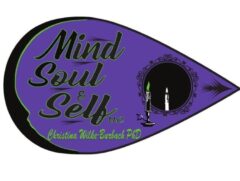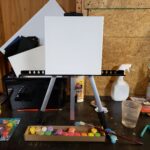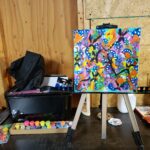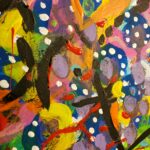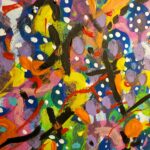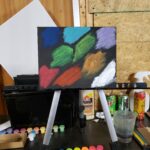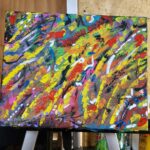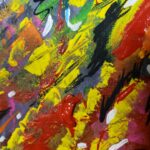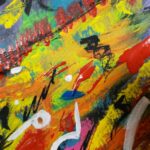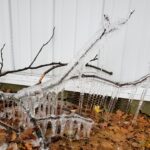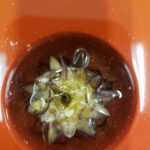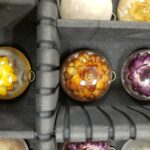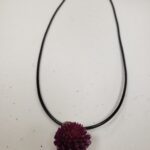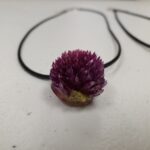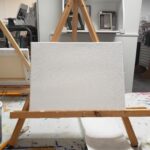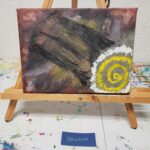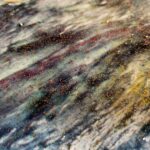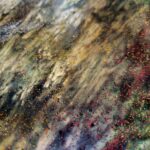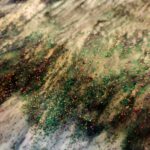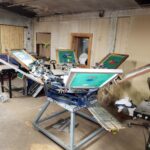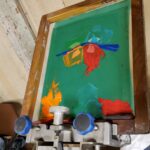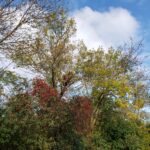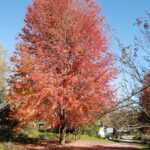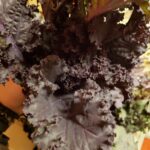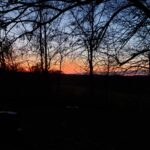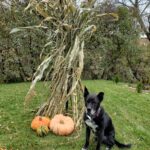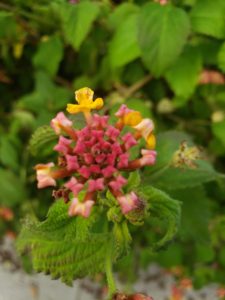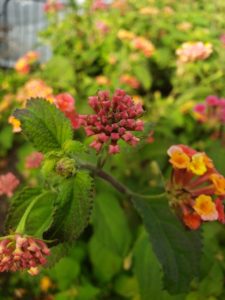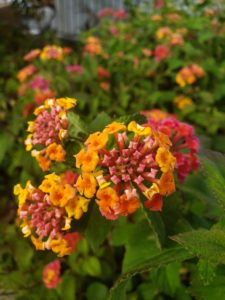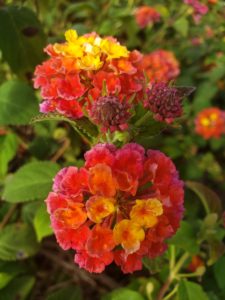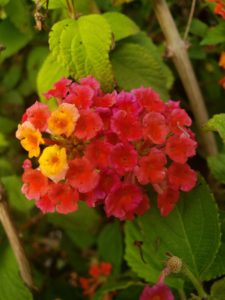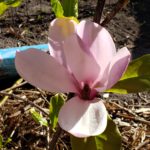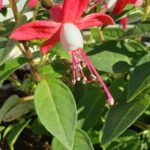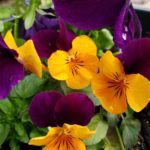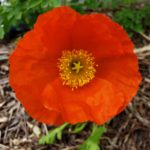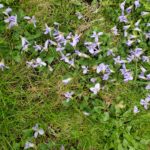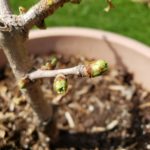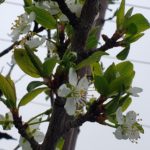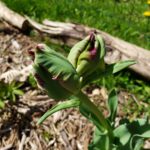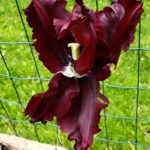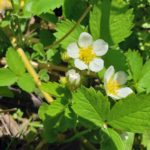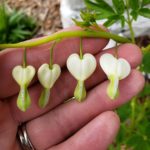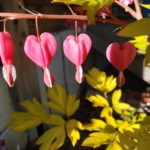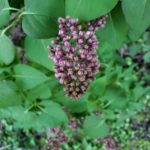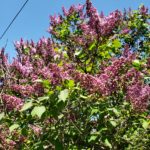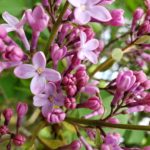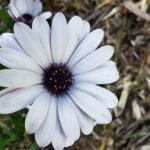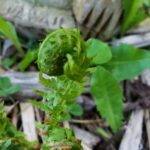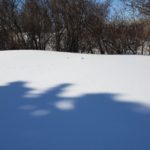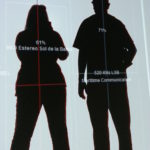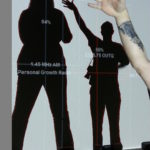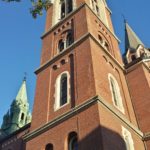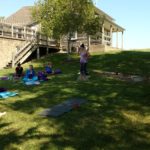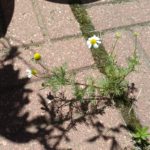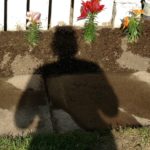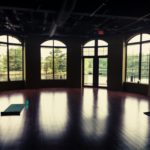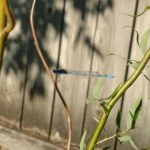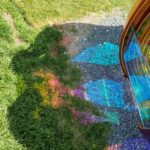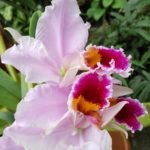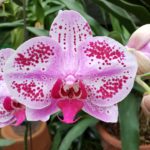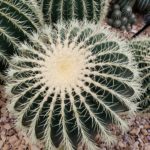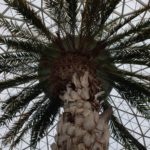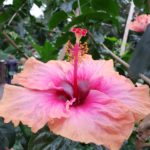What is Transpersonal Psychology?
The Blog of Christina Wilke-Burbach PhD
I view the world through a Transpersonal (Spiritual) Psychology framework. Each individual is a unique unity of mind, emotions, heart, body, and soul. Respect is given to the entire person, all possibilities of being, and experiences that are beyond the ordinary, ego, personality, and self.
Talk therapies, medications, and conventional treatments do not work for everyone as healing often needs to occur at a deeper level. Many times talk therapies and medications are Band-Aids and do not get to the root of the problem. Some healing providers, as a consequence of their training, overlook the fact that clients consist of mind, body, energy, and spirit. The Biomedicine approach fails to acknowledge the spiritual, energetic, and transcendent aspects of the individual. We all have the potential to heal, no matter how deep our wounds may be. Powerful methods of psychological, emotional, and spiritual healing are largely non-verbal; art, music, dance, meditative/altered/trance states, and bodywork/energy work. The language of the soul/psyche is symbols, images, colors, vibrations, feelings, and patterns; we communicate this without words. Art, music, and dance are gateways to the unconsciousness and can facilitate deep healing, self-awareness, and transcendence.
From Psychology Today: “Unlike most forms of psychotherapy that concentrate on improving mental health, transpersonal therapy takes a more holistic approach, addressing mental, physical, social, emotional, creative, and intellectual needs, with an emphasis on the role of a healthy spirit in healing. To facilitate healing and growth, transpersonal therapy places great emphasis on honesty, open-mindedness, and self-awareness on the part of the therapist as well as the client.
Transpersonal therapy is used to treat anxiety, depression, addictions, phobias, and other mood and behavioral problems. Those who are open to exploring their spiritual side, becoming more spiritually aware, or finding a spiritual path, or who are having trouble finding meaning in their life, may benefit from transpersonal therapy.
Transpersonal therapists use meditation, guided visualization, hypnotherapy, dream work, art, music, journaling, mindfulness practices, and other techniques that can help you explore your spiritual self and create meaning in your life. With the therapist’s guidance, you will find, build, and expand on your inner strengths and resources to create a more balanced life and a healthier state of mind.
Transpersonal therapy is a holistic healing intervention that evolved from the humanistic work of American psychologist Abraham Maslow in the 1960s. It integrates traditional spiritual rituals into modern psychology and emphasizes positive influences and role models rather than concentrating on negative experiences. This intervention is based on the idea that humans are more than mind and body but are also composed of intangible, or transcendent, factors that make up the whole person. Just as your mind and body sometimes require treatment, your spirituality and other intangible aspects of yourself often require healing of a sort. A transpersonal therapist may draw from a variety of different religions and spiritual practices for tools and methods that can help you explore various levels of consciousness and use your spirituality to guide you through troubled time.”
I (Christina Wilke-Burbach) am a consultant, educator, spiritual counselor, and holistic healing facilitator with 23 years of experience and education in natural health, psychology, and spirituality. I specialize in women’s wellness and spiritual psychology. The majority of my clients are empaths, intuitives, sensitives, psychics, mediums, healers, lightworkers, modern mystics, deeply spiritual individuals, and individuals experiencing a spiritual awakening. I use holistic approaches that treat the whole person. I do not practice western psychology, psychotherapy, psychological counseling, or psychiatry; I do not give diagnosis or labels or provide psychological treatment. I am not a medical doctor, licensed psychologist or mental health therapist, and do not accept insurance. I am a spiritual counselor; combining psychology, spirituality, and intuition into her healing appointments. I have a PhD in Health Psychology, Training in Transpersonal Psychology (I have taken classes and trainings with the co-founder of the field of Transpersonal Psychology Stan Grof MD, PhD) , a Masters Degree in Psychology, a Bachelors Degree in Anthropology, a Bachelors Degree in Psychology, and a minor in Sociology, but I am an Alternative Medicine Provider, Holistic Healing Facilitator, Consultant, and Educator, not a behavioral health counselor or psychotherapist. My services can greatly complement Western psychological, counseling, psychiatric, and social work services clients may be receiving. Holistic Healing can also be a great alternative to traditional counseling and traditional mental health care. Think of me as an alternative counselor. My experience working in the Western mental health and psychology field and my own personal healing experience has taught me that talk therapies and medications do not work for everyone and healing occurs at a deeper level. Western Psychology also fails to acknowledge the spiritual and transcendent aspects of the psyche. In my healing appointments, I utilize a combination of energy medicine, counseling, chakra psychology, spirituality, Transpersonal Psychology, aromatherapy, herbal medicine, artwork, music, movement, intuitive readings, mind/body techniques, and natural health consultation. I specialize in women’s wellness and can best address:
- Major Life Changes and Life Transitions
- Feeling lost and/or unbalanced
- Women seeking wellness, life purpose, transformation, enlightenment, spiritual development, and personal growth.
- Women sensitive to others’ energy (Empaths)
- Spiritual Awakenings and Spiritual Emergence
- Women having psychic, mystical, and unexplainable experiences
- Stress, burnout, fatigue, & exhaustion
- Depression, Anxiety, Mood Imbalance
- Grief & Loss
- Emotional Concerns
- Substance Abuse
- Relationship Concerns, Family Concerns, Parenting Concerns
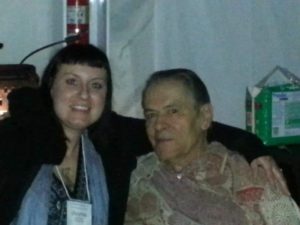
Services I offer include:
- Spiritual Mentoring
- Spiritual Psychology and Spiritual Counseling
- Reiki and other Energy Healing Modalities
- Tarot and other Intuitive Readings (Palm, Oracle, Astrology etc)
- Chakra Psychology, Chakra Readings, Chakra Balancing
- Past Life Regressions, Future Life Progressions, and Between Lives Regressions
- Journeys to the Akashic Records
- Hypnosis and Guided Meditation
- Intuitive Development
I also facilitate and host a monthly support group (The Goddess Gathering) for women experiencing a spiritual awakening.
Here is a great article that further discusses Transpersonal Psychology:
“What is Transpersonal Psychology & Can it Change The World?”
Article Below Written by Johnny Stork, MSc on Nov 13, 2019
Transpersonal psychology — sometimes called “spiritual psychology” or the “psychology of spirituality” — is the evolution of the humanistic and person-centered psychology movement popularized by Abraham Maslow and Carl Rogers in the middle of the 20th Century. Walsh & Vaugh, (1993) define the transpersonal as “experiences in which the sense of self extends beyond (trans) the individual or personal to encompass wider aspects of humankind, life, psyche or cosmos” (p. 203). After reviewing over 200 citations in the literature, Lajoi & Shaprio (1992) defined transpersonal psychology as being “concerned with the study of humanity’s highest potential, and with the recognition, understanding, and realization of unitive, spiritual, and transcendent states of consciousness” (p. 91).
Transpersonal psychology is also a whole-person (holistic) psychology which embraces the important role of self-transcendent states, mystical states, psychedelic experiences and other forms of non-ordinary and exceptional states of consciousness in fostering personal transformation, well-being and optimal human flourishing. These exceptional and self-transcendent or awakening states have been linked to increased altruism, compassion and other pro-social behaviours, begging the question “can transpersonal psychology save the world?” In this article I will present a snapshot of the history behind the development of transpersonal psychology (mentioning only the key figures) and present a very simple, but logically consistent argument for the role which transpersonal psychology might play in changing the world for the better.
History of Transpersonal Psychology
Freudian psychology and behaviorism — sometimes called the First and Second Force’s in psychology respectively — were the two dominant branches of psychology in America around the middle of the twentieth century. During this time, criticism was also growing around the limitations of psychoanalysis or behaviorism to adequately explain the breadth of human experiences and behaviors. Pioneers like Abraham Maslow felt that many of the uniquely human qualities such as love, morality, religion, spirituality, art or extreme and non-ordinary states of consciousness could not be adequately explained by either psychoanalysis or behaviorism. And, other important and defining uniquely human experiences like self-consciousness and introspection were completely ignored (Grof, 2008). Maslow felt that these uniquely human conditions which define many of our meaningful experiences in life, were left out of the two dominant schools of psychology at the time.
Maslow’s (and Anthony Sutich’s) solution during the early 1950’s, was the creation of the “Third Force” of psychology better known as humanistic psychology. Humanistic psychology honored and embraced consciousness, introspection and the other uniquely human qualities which were left out of psychoanalysis and behaviorism. This new holistic and multi-modal approach to psychology also shifted the emphasis from the dysfunction-based models of psychoanalysis, and the animal-research basis of behaviorism, to an approach focused on growth, wellness, human potential, self-actualization and the interdependence of mind and body (Grof, 2008). Humanistic psychology with its more integrated, multi-modal and holistic (whole-person) approach which celebrated these more positive aspects of the human experience, soon became the dominant model of psychology in North America. Another well-known humanist at the same time embracing these positive aspects of human psychology was Carl Rogers who defined his self-actualization model around what he termed the fully functioning person. Roger’s theories around self-actualization and the fully functioning person, later formed the basis of his Client-Centred Therapy approach to psychotherapy. (Rogers, 1959).
During the 1960’s and into the 1970’s — a period when the humanistic theories of Maslow and Rogers were popular — there was an explosion of interest into Eastern philosophies, psychedelics, shamanism, meditation, mystical states and other ancient wisdom practices. This renaissance of interest into spiritual, ritualistic and transcendent human states drew attention to the fact that even the new holistic and humanistic psychology was still missing a number of critical human characteristics and states of non-ordinary consciousness which often had deeply significant and even transformational effects. Both Sutich and Maslow grew dissatisfied with the framework they had created for humanistic psychology and felt that what was still missing in their holistic approach to psychology, were these spiritual and transcendent aspects of consciousness and human experience (Sutich, 1976). Maslow and Sutich felt that any comprehensive approach to psychology “had to include observations from such areas as mystical states, cosmic consciousness, psychedelic experiences, trance phenomena, creativity, and religious, artistic, and scientific inspiration” (Grof, 2008, p. 47).
In 1967, a working-group consisting of Abraham Maslow, Anthony Sutich, Stanislav Grof, James Fadiman, Miles Vich and Sonya Margulies met in California with the goal of defining and creating a new Fourth Force of psychology (transpersonal) which would embrace the full spectrum of human experience, including the non-ordinary, self-transcendent states of consciousness which had been shown to play such a significant role in exceptional states, psychedelics, contemplative practices and thousands of years of ancient wisdom traditions (Grof, 2008). The psychological significance of these exceptional, non-ordinary and transpersonal states of consciousness which spurred the creation of a Fourth Force in psychology, is further apparent when we consider that Maslow revised his most familiar and popular model of human motivation and needs — the Hierarchy of Needs pyramid — to include self-transcendence (Mark & Koltko-Rivera, (2006).
A few years after that fateful meeting in 1967 with Maslow, Suttich, Grof and others, in 1969 the Journal of Transpersonal Psychology began publication and in 1971 the Association for Transpersonal Psychology was established, which recently celebrated it’s 50 Year Anniversary. Transpersonal psychology had finally arrived!
Revising Maslow’s Hierarchy of Needs
Most people are familiar with Maslow’s original Hierarchy of Needs (HON) which defines a pyramidal model of human motivation beginning with the drive to meet our most basic Physiological and Safety needs. Once our basic physiological and safety needs are met, we can then focus on making connections with others (Love/Belonging) and meeting Esteem needs (accomplishments). At the very pinnacle of human motivation in Maslow’s original HON, is Self Actualization. Self Actualization, unlike the previous stages which are motivated to meet a particular need, is motivated by a desire to GROW, to achieve one’s full potential, to excel in one’s career, artistic expression, writing, music or other passions.
Maslow’s Initial Hierarchy of Needs
Maslow’s HON’s is one of the most recognized models of human motivation and continues to be standard reading for most undergraduate or college psychology programs. However, with the realization that higher and non-ordinary states of consciousness play a fundamental role in human flourishing and well-being, combined with the formal development of transpersonal psychology in the late 60’s, Abraham Maslow REVISED his original HON in the early 70’s. Maslow placed Self Transcendence above Self Actualization as the highest level of human motivation, needs and conscious experience (Mark & Koltko-Rivera, 2006).

Maslow’s Revised Hierarchy of Needs
It should be noted that the addition of Self Transcendence to Maslow’s HON was a RADICAL change from the original model. Each level of the original HON was defined by motivations and actions which represented fundamentally self-serving physical, safety, belonging and personal accomplishment needs. Self TRANSCENDENCE on the other hand, literally refers to states, motivations and actions which transcend (go beyond) the individual self.
Awakening Experiences
Self-transcendent states are also one aspect of what are known as “awakening” experiences. Often misunderstood and historically attributed to religious or spiritual practices, these “awakening” experiences have recently been shown to occur most often outside a religious or spiritual context (Taylor, 2012). These “awakening” experiences are typically evoked by psychological trauma, contact with nature, spiritual/contemplative practices like meditation and even through engagement with spiritual literature (Taylor, 2012).
In his more recent research, Taylor (2017) also identified a number of common characteristics of the “awakening” experience such as a sense of harmony and meaning, dissolution of ego or self-transcendence, along with an increased sense of connection and unity. These increased perceptions of unity, connection and egolessness were also accompanied by an increase in pro-social behaviours like altruism, compassion and other activities associated with service to others.
Bringing us back to current times, the recent explosion of interest in meditation & mindfulness as well as psychedelics and the science behind their ability to trigger transpersonal states and self-transcendence, has only increased awareness of, and interest in, transpersonal psychology. Transpersonal principles are also spreading to other areas like psychotherapy, psychiatry, coaching, education, business etc. Today, awareness of transpersonal psychology as a branch/evolution of psychology continues to grow globally. New schools are popping up which offer courses along with undergraduate and graduate programs. Transpersonal methods and principles are also showing up in traditional psychology programs and courses around the world.
Can Transpersonal Psychology Change The World?
Although transpersonal psychology evolved out of the humanistic and positive psychology movements around the middle of the last last century, and represents the Fourth Force in the study of human psychology and behavior, it’s relevance and value today would seem to extend much further. For instance, in the past decade or more there has been an explosive growth of scientific investigations into the psychological nature of spirituality and the characteristics or states which contribute to human flourishing and thriving (Kor, Pirutinsky, Mikulincer, Shoshani & Miller, 2019). Transpersonal psychology — also called “spiritual” psychology or the “psychology of spirituality” — is at the forefront of this research and is leading the way in identifying the conditions and practices which may contribute to the non-ordinary, self-transcendent and awakening states which occur most often outside a religious or spiritual context, as well as within them (Taylor, 2017).
(1) Transpersonal psychology is leading the way in the study of spirituality and the non-ordinary states of consciousness, awakening and self-transcendence linked to human flourishing and well-being.
Transpersonal psychology (and other supporting fields), have helped to validate the existence and psychological benefits of non-ordinary states of consciousness such as awakening and self-transcendence, previously dismissed and linked to spiritual or religious practices.
(2) Transpersonal psychology — through embracing and researching previously dismissed awakening, non-ordinary and self-transcendent states of consciousness — may bring us one step closer to bridging the historical divide between science and spirituality/religion.
The recent renaissance of interest into the medical, psychological and transformational benefits of psychedelics, has also increased public awareness of these awakening, self-transcendent and non-ordinary states of consciousness and their important role in fostering well-being and flourishing.
(3) Transpersonal psychology — literally “beyond-self” psychology — with its long history of embracing self-transcendence, awakening and other non-ordinary states of consciousness, is perfectly positioned to support further research into the use of psychedelics in therapeutic and coaching environments geared towards self-improvement, transformation, flourishing and well-being.
These awakening, non-ordinary and self-transcendent states embraced by transpersonal psychology, which can be induced by various psychedelic substances and which are described in many religious and spiritual traditions, also appear to be strongly linked to pro-social behaviors which foster cooperation and harmony within a community (Kor et al, 2019; Taylor, 2017).
(4) Therefore, transpersonal psychology in practice, and transpersonal principles applied in other fields, may help us to better understand how to foster individual well-being, flourishing and even the conditions for self-transcendence which have been linked to increased pro-social behaviors, potentially leading to increased social harmony and a better world.
Closing Comments
Although (not yet) widely recognized by the public, or even consistently defined in the field, transpersonal psychology — the Fourth Force in psychology — with roots solidly in humanistic and positive psychology, has always been very much at the forefront of the science’s behind happiness, well-being and flourishing. Transpersonal psychology is literally defined by it’s embrace of and explorations into, the highest potentials of non-ordinary consciousness and self-transcendent states which have been linked to pro-social behaviors like altruism, compassion and service. The recent and explosive growth of interest in psychedelics has also increased public awareness of the wellness and transformational potential of the self-transcendent states they can evoke. When combined with the growing interest in reconciling ancient wisdom traditions, religion and spirituality with science, transpersonal psychology seems poised to become even more relevant in the future. Potentially even helping to create the paradigm shift which may be necessary in order to bridge the divide between science and spirituality/religion. One of the key figures in the history of transpersonal psychology, Stanislav Grof, put it this way:
“Western science is approaching a paradigm shift of unprecedented proportions, one that will change our concepts of reality and of human nature, bridge the gap between ancient wisdom and modern science, and reconcile the differences between Eastern spirituality and Western pragmatism.” (Grof, 1985. p 16)
So, can transpersonal psychology change the world for the better? It already has!
References
- Grof, S. (1985). Beyond the Brain: Birth, Death, and Transcendence in Psychotherapy. State University of New York, Albany.
- Grof, S. (2008). Brief History of Transpersonal Psychology. International Journal of Transpersonal Studies, 27(1), 46–54.
- Kor, A., Pirutinsky, S., Mikulincer, M., Shoshani, A. & Miller, L. (2019). A Longitudinal Study of Spirituality, Character Strengths, Subjective Well-Being, and Prosociality in Middle School Adolescents. Frontiers of Psychology.
- Mark, E. & Koltko-Rivera. (2006). Rediscovering the Later Version of Maslow’s Hierarchy of Needs: Self-Transcendence and Opportunities for Theory, Research, and Unification. Review of General Psychology. 10(4). 302–316.
- Rogers, C. (1959). A theory of therapy, personality and interpersonal relationships as developed in the client-centered framework. In (ed.) S. Koch, Psychology: A study of a science. Vol. 3: Formulations of the person and the social context. New York: McGraw Hill.
- Lajoie, D. H. & Shapiro, S. I. (1992). Definitions of transpersonal psychology: The first twenty-three years. Journal of Transpersonal Psychology, 24(1). 79–98.
- Sutich, A. (1976). The founding of humanistic and transpersonal psychology: A personal account. Doctoral dissertation, Humanistic Psychology Institute, San Francisco, California.
- Taylor, S. (2012). Spontaneous Awakening Experiences: Beyond Religion And Spiritual Practice. Journal of Transpersonal Psychology. 44(1). 73–91.
- Taylor, S. (2017). Exploring Awakening Experiences: A Study of Awakening Experiences in Terms of Their Triggers, Characteristics, Duration And Aftereffects. The Journal of Transpersonal Psychology. 49(1). 45–65.
- Walsh, R. & Vaughan, F. (1993). On transpersonal definitions. Journal of Transpersonal Psychology, 25 (2), 125–182.
